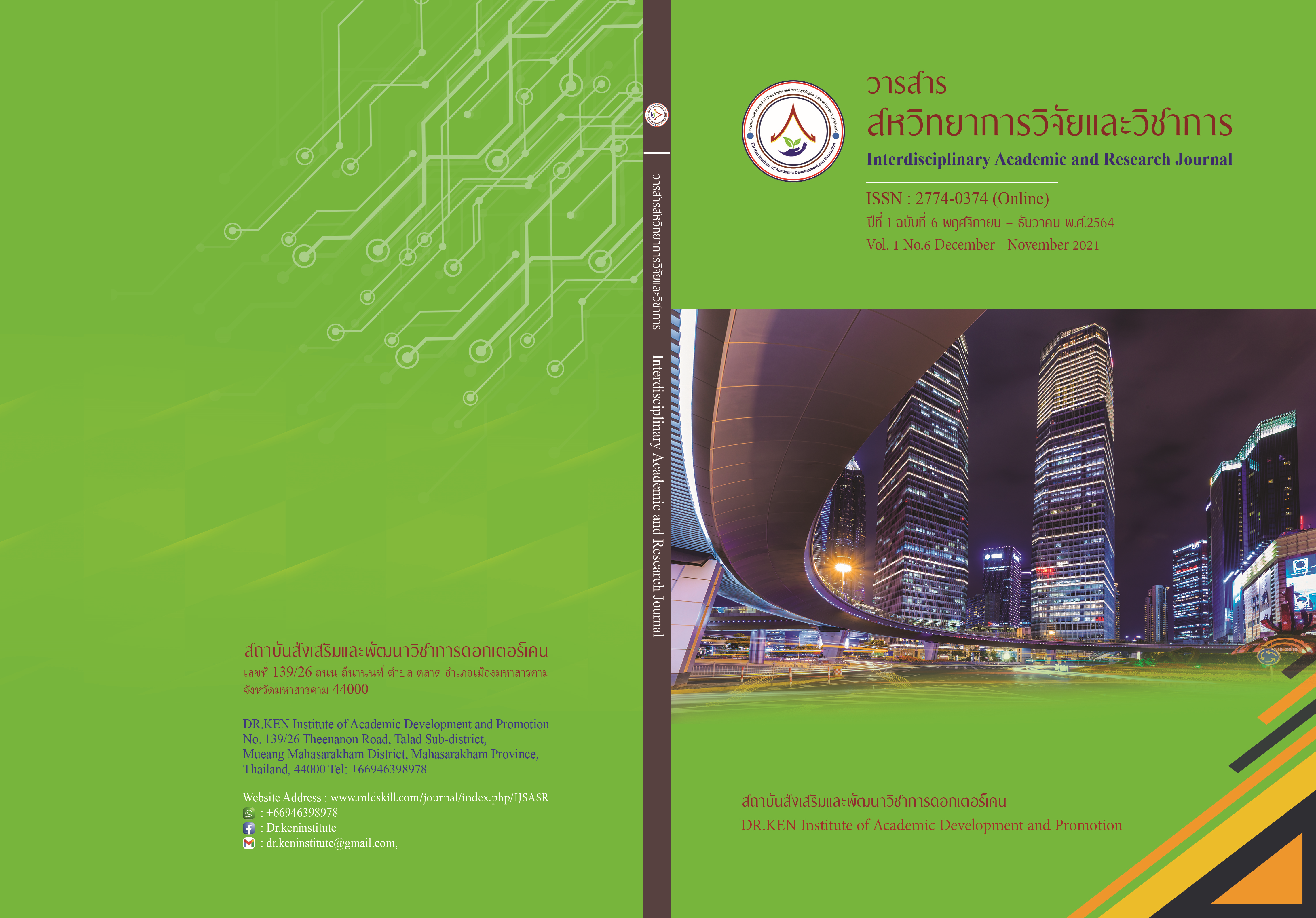Legal Principles and Mass Communication Ethics Issues in Presenting Entertainment News in the Digital Era
DOI:
https://doi.org/10.14456/iarj.2021.28Keywords:
Media Ethics, Entertainment News, Digital Age, Media Laws, Defamation, Defamation by Advertising, Criminal CodeAbstract
Presenting information is an important instrument for building understanding, relationships and connection among people in society. However, there are many issues in the mass media especially the legal and ethical issues of journalism in the presentation of entertainment news. This is because entertainment news is popular and has a great influence on people in society as a recipient. The messages from such news can have both positive and negative impacts. Entertainment news trends tend to focus more on profits and popularity than on maintaining the rules, which are the framework for supposed legal and ethical standards. The laws which will focus on this article are mainly about reputation offenses and the offense of defamation by advertising under the Criminal Code Sections 326 and 328. Moreover, nowadays, the media can be anyone, for this reason, they have to be more careful to avoid damage and to maintain social order at the same time. Therefore, the pursuit of legal and ethical communication formats and measures in the entertainment news presentation will lead to the development of creative news presentations in the future.
References
กตัญญู บุญเดช. (2555). ภาพสะท้อนทางจริยธรรมและจรรยาบรรณของนักข่าวบันเทิงไทย. วิทยานิพนธ์นิเทศศาตรมหาบัณฑิต มหาวิทยาลัยรังสิต.
กัญญา บูรณเดชาชัย. (2549). การสื่อสารมวลชน แนวคิด ทฤษฎีและสถานการณ์ในประเทศไทย. ชลบุรี : มหาวิทยาลัยบูรพา
กาญจนา แก้วเทพ,และ นิคม ชัยชุมพล. (2555). คู่มือสื่อใหม่ศึกษา. กรุงเทพฯ: สำนักงานกองทุนสนับสนุนการวิจัย.
กาญจนา แก้วเทพ. (2556). คู่มือสื่อใหม่ศึกษา. กรุงเทพฯ: โครงการเมธีวิจัยอาวุโส ฝ่ายวิชาการสำนักงานกองทุนสนับสนุนการวิจัย.
กิติมา สุรสนธิ. (2557). ความรู้เบื้องต้นทางการสื่อสาร. กรุงเทพฯ: จามจุรีโปรดักส์ จำกัด.
บุบผา เมฆศรีทองคำ และขจรจิต บุนนาค. (2557). พฤติกรรมการบริโภคข่าวผ่านสื่อเฟซบุ๊คของคน ต่างวัยในสังคมไทย. วารสารบัณฑิตศึกษา มหาวิทยาลัยราชภัฏวไลยอลงกรณ์ ในพระบรม ราชูปถัมภ์, 8 (3), 230-247.
ปณัชญา ลีลายุทธ และ บุญเลิศ โอฐสู. (2560). จริยธรรมและจรรยาบรรณสื่อมวลชนยุคสื่อดิจิทัล. วารสารบัณฑิตศึกษาปริทรรศน์, 13 (2), 176-189.
พิชิต วิจิตรบุญยรักษ์. (2554). สื่อสังคมออนไลน์: สื่อแห่งอนาคต. วารสารนักบริหาร, 31 (4), 99- 103.
รัตนวดี นาควานิช. (2547). การรายงานข่าวเฉพาะด้าน. กรุงเทพฯ: สำนักงานคณะกรรมการอุดมศึกษา.
วรางคณา ยินดีฉัตร. (2559). การบริหารการผลิตรายการข่าวบันเทิงที่สถานีโทรทัศน์ผลิตเอง. วิทยานิพนธ์ปริญญามหาบัณฑิต : มหาวิทยาลัยธรรมศาสตร์.
วัฒณี ภูวทิศ. (2557). บทบาทเชิงจริยธรรมของนักหนังสือพิมพ์ในการรายงานข่าวสารหน้าหนึ่งใน หนังสือพิมพ์รายวันภาษาไทย. วารสารวิจัยราชภัฏเชียงใหม่, 15 (1), 95-107.
สมชาติ ยรรยงสติมั่น.(2545).พฤติกรรมการเปิดรับ ความพึงพอใจ และการนำไปใช้ประโยชน์ของผู้อ่านนิตยสารผู้ชาย กรณีศึกษานิตยสาร "GM", นิตยสาร "BOSS" และนิตยสาร "Esquire"
สิริชัย แสงสุวรรณ.(2558). พฤติกรรมการใช้สื่อดิจิทัลของผู้บริโภคในเขตกรุงเทพมหานคร.การค้นคว้า อิสระเป็นส่วนหนึ่งงของการศึกษาตามหลักสูตรนิเทศศาสตรมหาบัณฑิต สาขาวิชาการสื่อสาร การตลาดดิจิทัล, มหาวิทยาลัยกรุงเทพ.
สิริชัย วงษ์สาธิตศาสตร์. (2549). สื่อออนไลน์ ช่องทางเลือกใหม่ในการรายงานข่าวของสื่อมวลชน ไทย. วารสารไทยมหาวิทยาลัยรามคำแหง, 23 (1), 43-45.
อรวี บุนนาค. (2554). ภาพสะท้อนจริยธรรมสื่อมวลชนจากกลวิธีการตั้งคำถามสัมภาษณ์บุคคล สาธารณะของผู้สื่อข่าวบันเทิง. กรุงเทพฯ: สภาการหนังสือพิมพ์แห่งชาติและสถาบันอิศรา มูลนิธิพัฒนาสื่อมวลชนแห่งประเทศ.
อรอนงค์ สวัสดิ์บุรีและ พงศ์ภัทร อนุมัติราชกิจ, (2554). ผลกระทบของสื่อต่อวิกฤติชาติ.วารสารวิชาการมหาวิทยาลัยหอการค้าไทย, 31 (4), 69-84.
Day (2006). Ethics in Media Communication: Cases and Controversies. The United States.
DeFleur, M.L., & Dennis, E. (1996). Understanding mass communication. Boston: Houghton Mifflin Company.
Lasswell, H.D.(1948). The Structure and function of communication in society. In L. Bryson(Ed.), The communication of ideas (pp.37-40). New York: Harper.
McCombs, M. E. & Becker, L. B. (1979). Using mass communication theory. New York: Prentice-Hall.
Theordore, P. (1973). The Social Responsibility of the Press. Four Theories of the Press. Illinois: University of Illinois.
Wright, P. (1974). The harassed decision maker: Time pressures, distractions, and the use of evidence. Journal of Applied Psychology, 59 (5), 555–561.
Downloads
Published
How to Cite
Issue
Section
License
Copyright (c) 2021 Interdisciplinary Academic and Research Journal ISSN 2774-0373 (Online)

This work is licensed under a Creative Commons Attribution-NonCommercial-NoDerivatives 4.0 International License.
Copyright on any article in the Interdisciplinary Academic and Research Journal is retained by the author(s) under the under the Creative Commons Attribution-NonCommercial-NoDerivatives 4.0 International License. Permission to use text, content, images, etc. of publication. Any user to read, download, copy, distribute, print, search, or link to the full texts of articles, crawl them for indexing, pass them as data to software, or use them for any other lawful purpose. But do not use it for commercial use or with the intent to benefit any business.
















.png)


